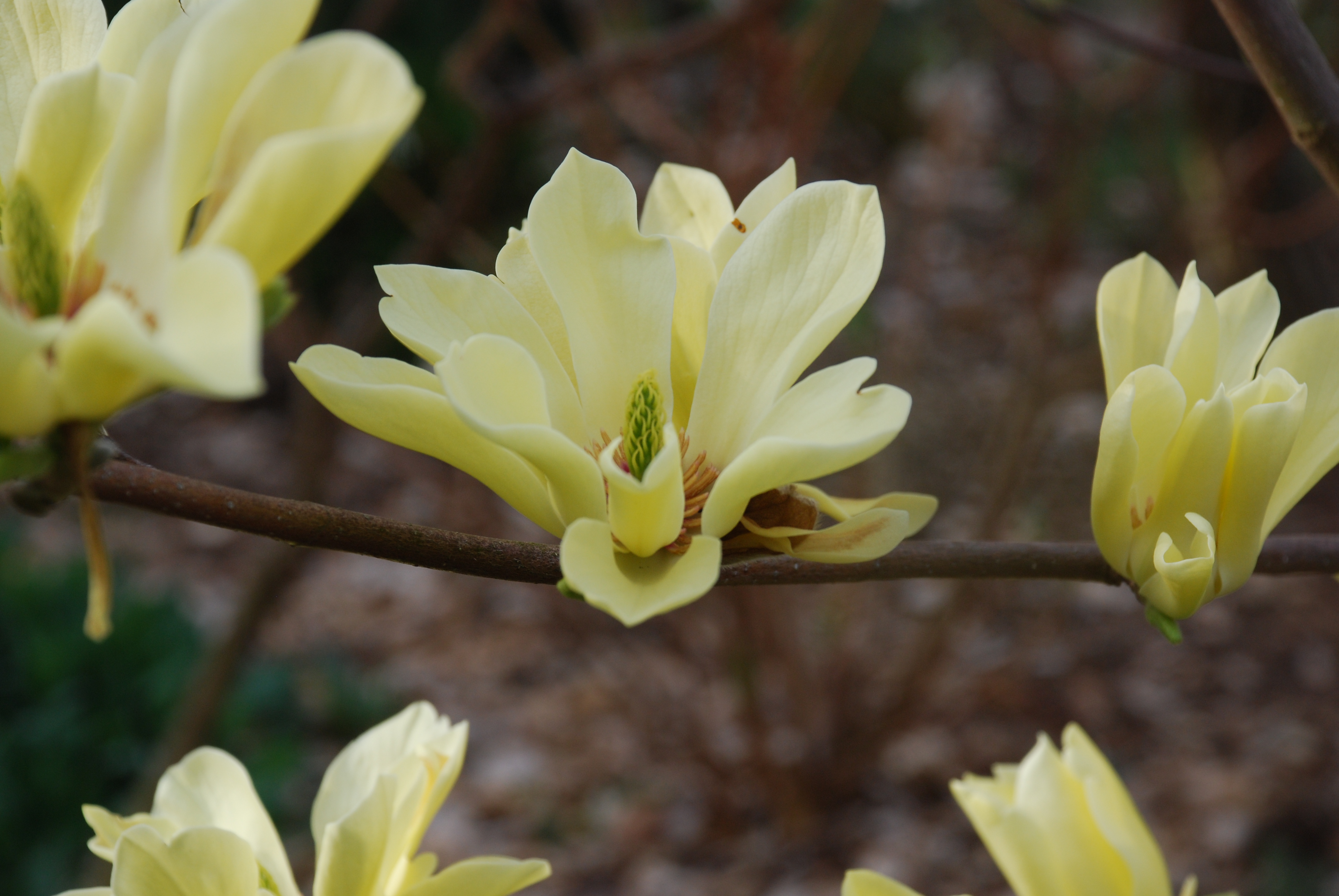I have visited the Biltmore Estate on several occasions, but my May visit this year was special. I had the opportunity to interview Parker Andes, Biltmore’s Director of Horticulture, and Bill Alexander, Landscape and Forest Historian. Few properties match the overall grandeur of Biltmore Estate and Gardens in Asheville, North Carolina. Biltmore is a historical perspective of America over […]
Archive for June, 2011
July Lawn Care
Around July 4th it’s time for a second (and last) application of crabgrass preventative. The herbicide which you applied in late winter is likely worn off. The basic herbicide preventative product tradenames (and active ingredients) are: Barricade® (prodiamine), Dimension® (dithiopyr), Echelon® (prodiamine + sulfentrazone), Pendulum® (pendimethalin), and Ronstar® (oxadiazon). Irrigate (1/2 inch water or 1 1/2 hours watering with an […]
Rosebay Rhododendron for Cool Shady Landscapes
Rosebay Rhododendron (Rhododendron maximum) grows in dense woodland shade along cool mountain streams and on moist, rocky slopes. This Southern Appalachian native is extremely winter hardy to -15° to -20° F. It is a late-season bloomer reaching its peak around late June. Rosebay grows large, 15 to 20 feet in height. On some sites it […]
Where Can I Buy That?

Let’s face it – rare and unusual plants are not likely for sale at your local garden center. Full service garden centers located in large metropolitan areas may sell one or two.The internet has become the best plant finding source. Some on-line purveyors may carry a rare item, but not sell it in large quantities. High sticker shock may chase you […]
Flaming ‘Fireball’ Hibiscus Quite A Summer Show
‘Fireball’ hibiscus (Hibiscus x moscheutos ‘Fireball’) is a vigorous hardy perennial with burgundy tinted cutleaf foliage and huge 10-12 inch clear red flowers from mid-summer to late summer. Plant height is 4 – 5 feet and 2 – 3 feet in width. A strikingly beautiful plant, ‘Fireball’ thrives on heat and humidity. It wants full […]
Summer Pruning of Oakleaf and Bigleaf Hydrangeas
Bigleaf or “mophead” hydrangeas (Hydrangea macrophylla) tend to get tall and leggy, and outgrow their garden space. Our native oakleaf hydrangeas (Hydrangea quercifolia) are pruned as blooms quality declines. Remove or “deadhead” all withered or faded flowers. Main pruning time for these two species is from mid-June thru mid-August. Mopheads may rebloom if they had […]
Leather Flower Clematis- Hot Pink Summer Flowering Vine
Leather flower (Clematis glaucophylla) is native to moist woodlands in the Southeastern U.S. This lovely flowering vine is covered with one inch hot pink flowers tipped in yellow. The solitary, 1- inch bell shaped flowers are on 6- inch long stalks which reach out for support. It is called “leather flower” because the petals are […]
Bagworms Can Devastate Evergreens
Bagworms feed on more than 128 species of plants, including junipers, cedars, arborvitae and white pine. More than one year of severe defoliation will kill a formerly healthy specimen. Bagworms have one generation per year. Eggs usually hatch in mid to late May across the Southern Appalachian region (USDA zones 6 and 7). Upon hatching, […]
Calliope™ Dark Red Geranium- One of the Best
Garden performance is very important. Calliope™ Dark Red geraniums have it!! Calliope geraniums are interspecific hybrids with zonal-type leaves and huge vibrant red flowers. Plant breeders crossed ivy geraniums (the kind commonly used as hanging baskets) and zonal geraniums (found growing in pots, window boxes, and as bedding plants). Calliope is a vigorous grower with a mounding to semi-trailing […]
Stewartia- A Tree for All Seasons
Japanese stewartia (Stewartia pseudocamellia) is a truly beautiful 20-30 foot small tree or multi-trunked shrub. Stewartia may be finicky to grow, but a great plant nonetheless. Although rarely seen in U.S. gardens, Japanese stewartia is the most commonly grown of the six stewartia species. All are winter hardy in the Southern Appalachian region (USDA zones 6 […]

 Posted in
Posted in 

